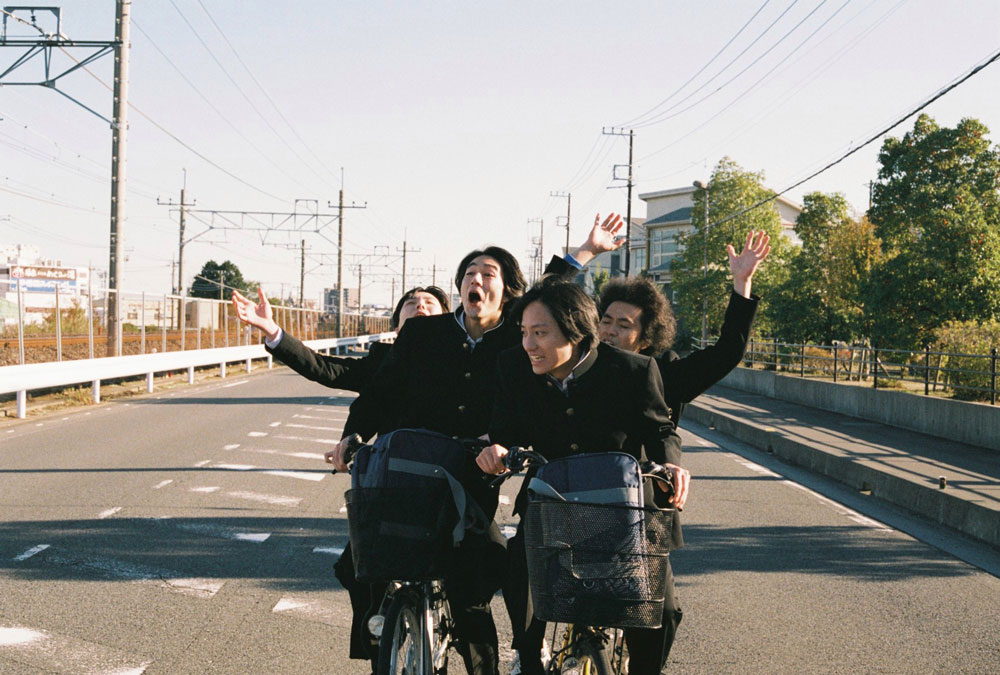!["Sasaki, In, My Mine" Director Takuya Uchiyama x Gaku Hosokawa I was determined not to run away from entertainment [Director's Interview Vol.96]](https://cinemore.jp/images/338ee5b8c5a008154c34becff94f35297fcedc368778b94cbab64ca744b18e7d.jpg)
"Sasaki, In, My Mine" Director Takuya Uchiyama x Gaku Hosokawa I was determined not to run away from entertainment [Director's Interview Vol.96]
Thoroughly prepared and destroyed on site
Q: I would like to ask about the actual scene. The conversations in the play were so real that there was no sense of speaking lines, and everyone seemed to be having a normal conversation on the spot. Were the lines exactly as written in the script? Or did they adopt the words and ad-libs that came out of the actors on the scene?
Uchiyama: Basically, it's almost 100% pure and follows the script. I sometimes revise the script on location, but I don't really like shooting in a way that extracts a lot of ad-libs. I'm grateful that people say the conversations are real and everyday, but the actors thoroughly become the characters and accumulate their lines so that they come out as everyday conversations. I asked all the actors to become more familiar with the characters than I, who wrote the script, and I asked them to be proactive enough to teach me about the role rather than asking me about it.
Q: Perhaps because the actors' interactions were so natural, it seemed like there weren't many cuts.
Uchiyama: I've been using long takes since "Vanitas," but this time I took on a new challenge and used a lot of cuts. However, one of the challenges was to make it look as natural as possible without making it look like I had taken the cuts, so I'm happy if it looks like I didn't take the cuts.

Q: The art that created the space where the actors stood, and the photography that cut it out, were both wonderful. How was the staffing decided?
Uchiyama: Basically, I got permission to work with all the cast and staff members I wanted, even if it was selfish. I put my heart and soul into the cast, staff, and locations, and I even think that the movie is pretty much set in stone.
I've always liked Shinomiya Hidetoshi's cinematography, and this time my wish came true, and I got to work with him. This film has two main timelines, the present and the past, but I made sure not to separate them by color, for example. To differentiate between the two, the past scenes were all shot handheld, and the present scenes were basically shot firmly on a tripod. This was decided from the beginning of filming, and we shot them thoroughly separately. I really wanted to make use of Shinomiya's handheld shooting here.
I've known Fukushima-san, the art director, since we shot the music video for King Gnu's "The Hole," and The Day After, he's been doing almost all of the art. He's someone who can handle any difficult requests I make, and I have complete trust in him. He's someone who can incorporate the art into how I want to express and show this movie, so Fukushima-san's participation was an absolute requirement. Of course, this time too, we've had him put a lot of effort into the art.
Q: The location was also challenging. As you can see in the trailer, it was shot right in the middle of Shinjuku. The scene in Shinjuku only appears for a moment, and it seems like it could have been shot anywhere, but they chose to shoot it in Shinjuku, where the shooting conditions are quite harsh. I think that the accumulation of each of these factors adds depth to the work and improves its quality.
Uchiyama: That's right. I deliberately shot it in Shinjuku. I had already decided in my mind that I wanted to shoot it in that spot in Shinjuku, at this angle, pan like this, and stop there, so I was absolutely determined to get that shot. I asked Shinomiya-san very detailed questions, and he was able to capture the shot perfectly.
Q: Director Uchiyama, you are also active in music videos and commercials, and I imagine you have a strong preference for image creation, but how do you usually communicate with your cameramen?
Uchiyama: I know that if I suddenly ask for something unreasonable on set, it may not be physically possible, so I always prepare thoroughly before filming. I ingrain everything in myself, such as the direction of the light, the equipment I will use, the angles and movements, and then I try to destroy everything I can on set. The more elaborate the image, the less interesting it becomes, so in a sense I try to have the courage to throw things away. I always weigh the pros and cons of what I will prepare for and what I will destroy on set.
Q: Did you feel like Shinomiya took the director's stance into full account and then put it into practice?
Uchiyama: We each proposed different methods to achieve the images we wanted. Shinomiya and the rest of the filming and lighting teams really worked hard to get the images we wanted.

